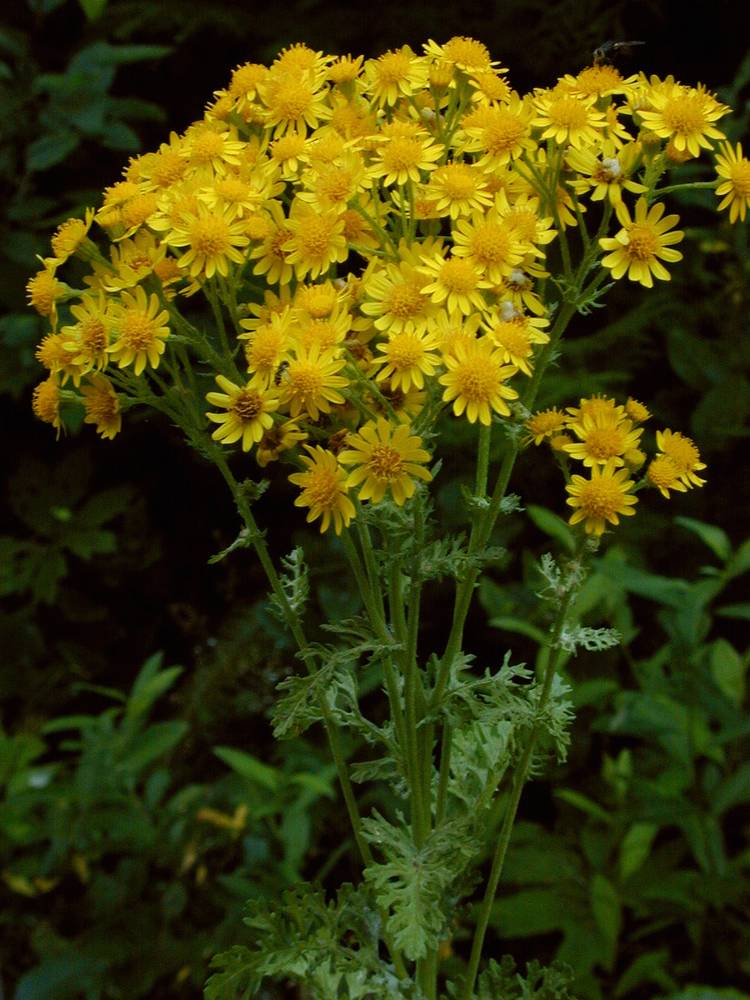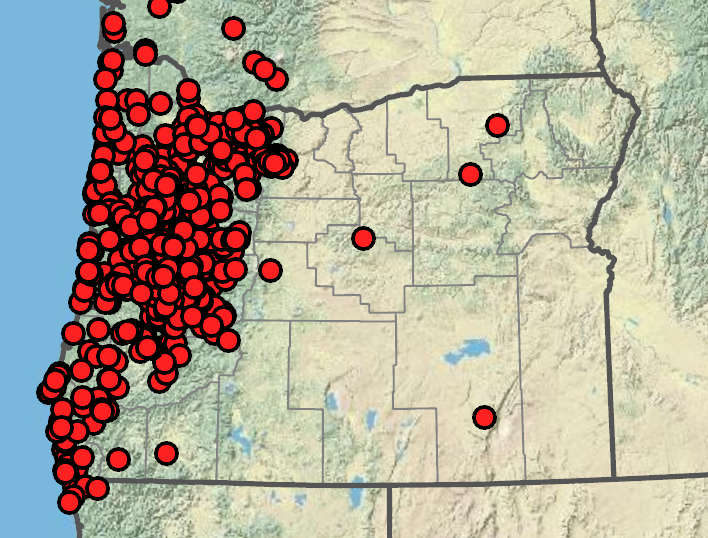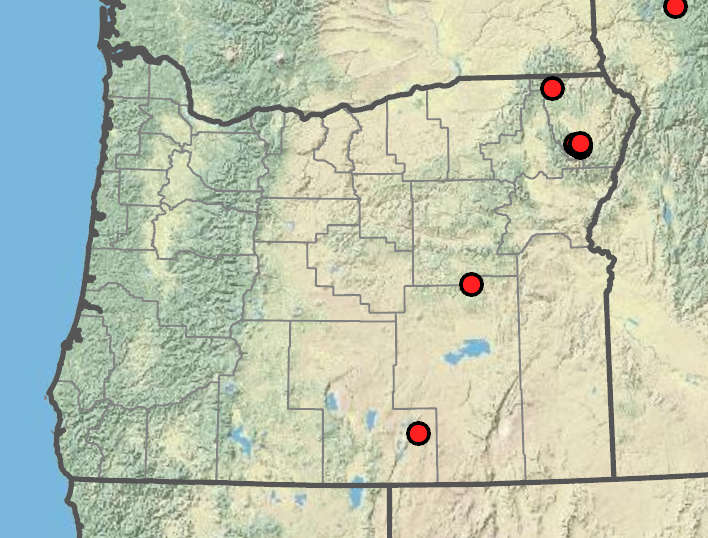Senecio jacobaea
Senecio sphaerocephalus
stinking willie, tansy ragwort
ballhead ragwort, mountain marsh butterweed
1, or rarely 2–4 and loosely clustered, often purple-tinged, sparsely and unevenly tomentose.
1, tomentose or unevenly glabrate.
basal usually withering before flowering;
cauline ± evenly distributed along stems;
distal slightly smaller; ovate to broadly ovate, bases tapered, usually 1–3-pinnate, ultimate margins dentate;
lobes obovate to spatulate, petiolate.
mostly basal;
basal present at flowering;
cauline reduced distally;
distal much reduced and bract-like, oblanceolate to elliptic, bases tapered;
margins weakly dentate or denticulate with callous denticles;
surfaces sparsely tomentose to nearly glabrous, petiolate.
compound corymb-like arrays;
bracts conspicuous but small.
corymb-like arrays;
bracts conspicuous.
widely cylindric or urn-shaped.
campanulate.
~13;
rays 8–12 mm.
~13;
rays 6–10 mm.
60–70+.
25–35+.
13, 3–4(5);
tips black or dark green.
(13)21, 3–7 mm;
tips black or dark brown.
2–6 bractlets, inconspicuous, usually < 2 mm.
1–5 bractlets, 2–3 mm.
0.75–1.3 mm, sparsely hairy or glabrous.
1.5–2.5 mm, usually hairy, sometimes glabrous.
(10)20–60+.
(3)5–24, usually > 10.
=40.
=40.
Senecio jacobaea
Senecio sphaerocephalus
Disturbed areas, pastures, roadsides. Flowering May–Sep. 0–1600 m. Casc, CR, Est, Sisk, WV. CA, ID, WA; north to British Columbia, northeast to MT, northeastern North America; Europe. Exotic.
Senecio jacobea is an introduced weed, originally from Europe. It establishes in places with cool, wet summers and is particularly toxic to livestock. In most states where it occurs, this species has been declared a noxious weed.
Open meadows, near conifer forests. Flowering Jun–Jul. 1100–1700 m. BW. ID, NV; northeast to MT, east to WY, southeast to CO. Native.
Although Senecio sphaerocephalus has been collected in Oregon, it is relatively rare within the state and more abundant in the more easterly parts of its range.
Debra Trock
Debra Trock
- Local floras:
BC,
CA,
OR,
WA
- Local Web sites:
CalFlora,
CalPhotos,
Flora NW,
PNW Herbaria,
Turner Photog.
WildflowerSearch
iNaturalist (observations)
USDA Plants Database
- LBJ Wildflower Center
- SEINet
- Plants of the World Online
- Encyclopedia of Life
- Wikipedia
- Google Image Search




